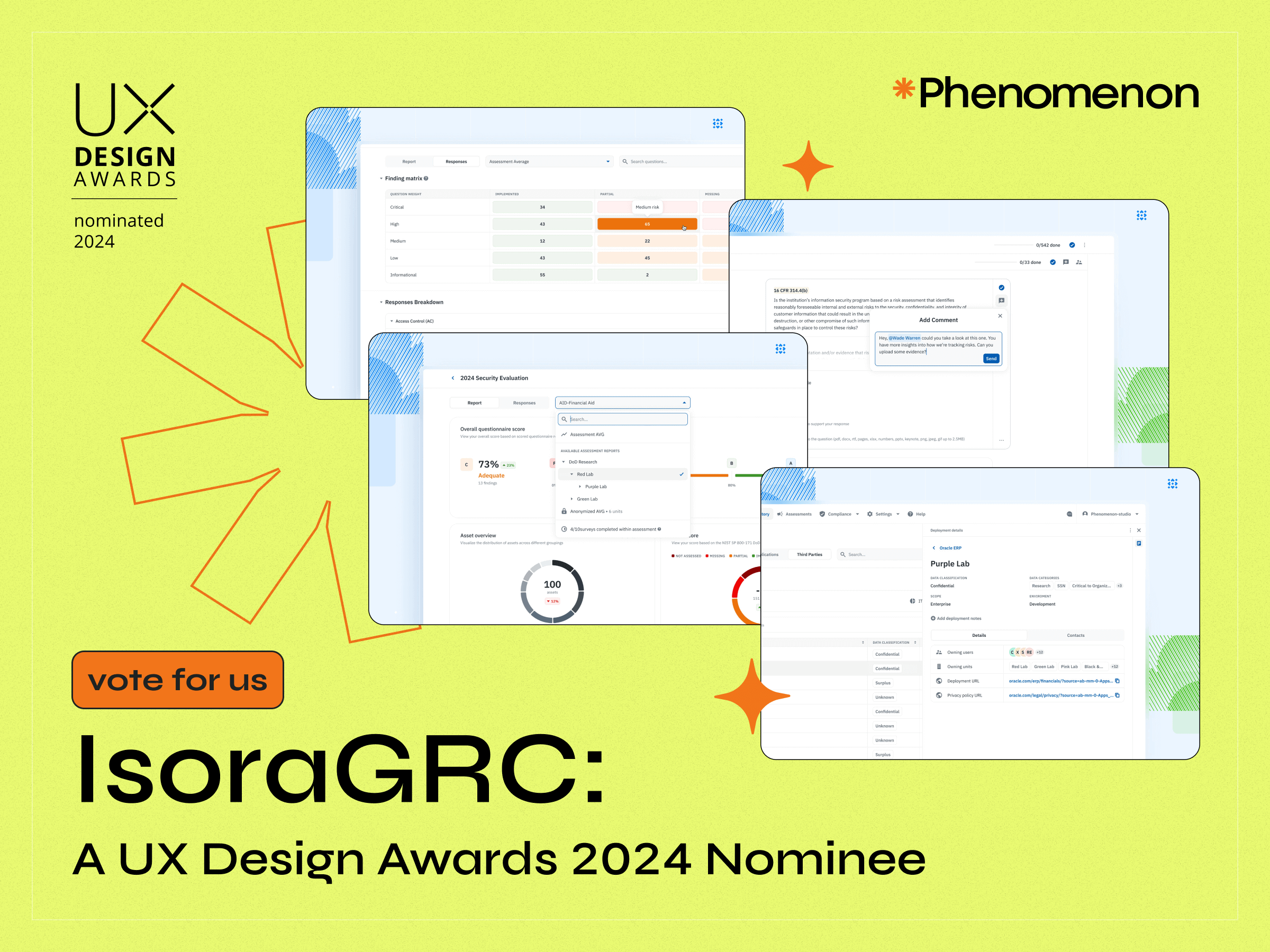
According to the latest data, 88% of online consumers say they are less likely to return to a website after a negative encounter. Plus, 32% of customers would abandon a beloved brand after just one negative experience. Picture this: you have a loyal customer base that has been purchasing your product or service for years. Then, you decide to roll out an update to your web app to add new features and freshen up the layout. But the update tanks your loading times, and suddenly, users are jumping ship. Years of hard work go up in smoke.
To avoid this nightmare scenario, a thorough UX audit before making any changes or launching a new product is non-negotiable. Think of it as a safety net that catches potential issues before they become full-blown disasters. A detailed UX audit delves into usability, performance, and user engagement, pinpointing areas that need attention. This proactive step not only saves you time and money but also keeps your users happy and loyal, ensuring your product stays a market success. Phenomenon Studio strongly recommends all business owners invest in a UX audit and not let their hard-earned reputation go down the drain. We’ll go into detail in the next sections of the article.
Understanding UX Audits
A UX audit is a comprehensive evaluation of a digital product’s user experience to identify areas for improvement. It goes beyond surface-level observations, diving deep into how users interact with and perceive the product. The primary goal is to enhance their experience by pinpointing usability issues, understanding user behavior, and aligning the product more closely with needs and expectations. Key components of a UX audit include heuristic evaluation, user testing, and analytics review. Heuristic evaluation involves a detailed review of the product using established usability principles, such as consistency, feedback, error prevention, and simplicity. This evaluation is performed by UX experts who can spot common usability problems that might go unnoticed by non-specialists. The test involves real users interacting with the product while performing typical tasks, revealing practical issues and frustrations that drive meaningful improvements. Analytics review analyzes data from tools like page views, click-through rates, and session durations, providing a quantitative look at engagement and highlighting areas of difficulty or disengagement.
There are different types of UX audits, including comprehensive and targeted audits. Comprehensive audits are in-depth reviews covering all aspects of the user experience, suitable for products undergoing significant changes or facing widespread usability issues. Targeted audits focus on specific areas of concern, such as mobile usability or the checkout process in an e-commerce site, addressing particular problems without needing a full-scale review. UX audits should be part of an ongoing process of refinement and enhancement, ensuring the product evolves with user needs and technological advancements. Regular UX audits foster a user-centered culture that prioritizes their needs and experiences, leading to more intuitive products that significantly enhance customer satisfaction and loyalty. By understanding the intricacies of UX audits, organizations can better appreciate their value and implement them effectively to transform challenges into opportunities for growth and improvement.
Identifying Common UX Challenges
When it comes to user experience, even the smallest issues can snowball into significant problems that drive users away. Identifying common UX challenges is crucial for ensuring your product not only meets but exceeds their expectations. Here are some of the most prevalent UX challenges that can hinder the success of your digital product:
- Usability Issues. Usability is the backbone of a positive user experience. Common problems include complex navigation, unclear instructions, and non-intuitive interfaces. When users struggle to accomplish basic tasks, their frustration can lead to abandonment. Ensuring that your product is intuitive and easy to use is key to retaining users.
- Navigation and Information Architecture Problems. Poorly organized content and confusing navigation can leave users feeling lost. If they can’t find what they’re looking for quickly and easily, they’ll likely move on to a competitor. Clear, logical information architecture and intuitive navigation paths are essential for guiding users through your product seamlessly. Thirty-eight percent of first-time website visitors look at the page layout or navigational links. If the layout is complicated or the navigation menu is frustrating, visitors may abandon your website.
- Visual Design Inconsistencies. Inconsistent visual elements, such as varying fonts, colors, and button styles, can create a disjointed experience that undermines your brand’s credibility. Consistency in visual design not only enhances aesthetics but also reinforces brand identity and trustworthiness.
- Accessibility Barriers. Accessibility is often overlooked but is vital for reaching a broader audience, including users with disabilities. In a review of the top one million websites, WebAIM discovered 95.9% had identifiable WCAG conformance failures on their homepages, with an average of 56.8 problems per page. Common barriers include lack of keyboard navigation, insufficient color contrast (81%), and missing alt text for images. Ensuring your product is accessible to all users demonstrates inclusivity and can significantly expand your user base.
- Performance and Loading Speed Issues. In today’s fast-paced digital world, users expect instant gratification. Slow loading times and performance lags can lead to high bounce rates and lost customers. Optimizing performance to ensure quick load times and smooth interactions is crucial for maintaining engagement.
The UX Audit Process
The UX audit process is a systematic approach designed to uncover usability issues and improve the overall user experience of your digital product. Here’s a detailed look at the key steps involved in a UX audit:
A. Preparation and Planning
- Defining Clear Goals and Objectives. Start by outlining what you hope to achieve with the UX audit. Are you aiming to enhance user satisfaction, improve navigation, or address specific usability issues? Clear, well-defined goals provide direction and focus, ensuring the audit yields actionable insights.
- Gathering Necessary Data and Resources. Collect all relevant information and tools needed for the audit, including user feedback and analytics data. Having everything in place beforehand ensures a smooth and efficient audit process.
B. Conducting the Audit
- Heuristic Evaluation. Employ established usability principles to review the product. This involves examining the interface for common usability issues such as inconsistent design elements, poor navigation, or confusing layouts. Heuristic evaluation helps quickly identify obvious problems and sets the stage for deeper analysis.
- User Testing. Engage real users to interact with the product and provide feedback. Observing how they navigate and use the product offers invaluable insights into real-world usability and user satisfaction. This type of testing helps uncover issues that might not be apparent through heuristic evaluation alone.
- Analytics and Metrics Analysis. Examine quantitative data from analytics tools to understand user behavior patterns. Metrics such as page views, click-through rates, and session durations provide a quantitative look at how users engage with the product, highlighting areas where they encounter difficulties or disengage.
C. Analyzing Findings: Making Sense of the Data
- Identifying Patterns and Trends. Review the data collected from the heuristic evaluation, user testing, and analytics to identify recurring issues and patterns. Look for trends that indicate broader usability problems or areas needing improvement.
- Prioritizing Issues Based on Impact. Not all issues are created equal. Prioritize the identified problems based on their impact on user experience and business goals. Focus on resolving high-impact issues first to maximize the benefit of your efforts.
D. Reporting Results: Communicating Insights and Recommendations
- Creating a Comprehensive Report. Compile the findings into a detailed report that includes identified issues, their impact, and recommended solutions. Use visuals such as screenshots, graphs, and user journey maps to illustrate key points.
- Presenting Findings to Stakeholders. Share the report with key stakeholders, including designers, developers, and business leaders. Ensure the presentation is clear and compelling, emphasizing the importance of the recommended changes and their expected impact on user satisfaction and business outcomes.
Transforming Challenges into Opportunities
UX audit is arguably the most effective way to turn usability challenges into opportunities. Identifying usability issues, navigation problems, design inconsistencies, accessibility barriers, and performance bottlenecks provides a clear understanding of where your product falls short. These insights are not just problems to fix but opportunities to enhance the user experience and exceed expectations.
Simplifying complex navigation and making interfaces more intuitive can lead to a more seamless journey for your users, encouraging them to spend more time on your platform. Improving visual design consistency not only enhances aesthetics but also reinforces brand identity and trustworthiness.
Accessibility improvements open your product to a broader audience, demonstrating inclusivity and expanding your consumer base. Ensuring that your product is accessible to all users, including those with disabilities, not only fulfills ethical and legal standards but also drives customer loyalty and engagement.
Optimizing performance and loading speeds is another area where challenges can be turned into opportunities. Users expect fast, responsive interfaces, and meeting these expectations can differentiate your product in a competitive market. Faster load times lead to lower bounce rates and higher satisfaction, directly impacting your bottom line.
Each challenge identified in a UX audit provides actionable insights that guide targeted improvements. By prioritizing high-impact areas and adopting a user-centered approach, you can implement changes that have a profound positive effect on the user experience. Moreover, involving stakeholders throughout the process ensures that improvements align with business goals and drive overall success.
Isora GRC approached Phenomenon Studio 1.5 years ago with a UX audit request. The primary issues identified encompassed non-responsive design across different devices, inconsistency in design elements, absence of user identification post-action, and unclear call-to-actions (CTAs). After a rigorous platform analysis and audit, our experts started redesigning the entire platform, as the initial interface required updates to respond to customer needs. Limited functionality and feature addition constraints were other reasons Isora wanted change. The comprehensive UX audit and subsequent redesign not only resolved these issues but also significantly enhanced user satisfaction and engagement, leading to improved overall platform performance. This transformation helped Isora GRC better meet their users’ needs and achieve their business goals.

Measuring the Impact of UX Changes
Measuring the impact of UX changes is crucial to understanding how effectively your improvements have enhanced the user experience and contributed to your business goals. This process involves a combination of quantitative and qualitative methods to provide a comprehensive view of the outcomes.
Defining Key Metrics
Start by identifying key performance indicators (KPIs) that align with your business objectives and user experience goals. Metrics such as user satisfaction scores, conversion rates, task success rates, and engagement metrics (like time on site, pages per session, and bounce rates) are commonly used to gauge the effectiveness of UX changes.
Analyzing Quantitative Data
Use analytics tools to collect and analyze quantitative data, tracking user behavior before and after implementing UX changes. Tools like Google Analytics and Hotjar provide valuable data on how users interact with your product. Comparative analysis of pre- and post-change data helps assess the impact, while A/B testing can determine which specific changes yield the best results.
Gathering Qualitative Feedback
Quantitative data alone doesn’t tell the whole story. Gathering qualitative feedback through user interviews, usability tests, and surveys provides deeper insights into perceptions and experiences. Post-implementation usability tests allow you to observe how users interact with the updated product, identifying any remaining pain points. Collecting user feedback through surveys and direct communication helps ensure the changes meet user needs and expectations.
Monitoring Long-Term Impact
It’s essential to monitor key metrics over time to ensure the improvements are sustainable and continue to benefit the user experience. Regular reviews of key metrics help track ongoing performance, identifying any regressions or new issues. This iterative process of continuous refinement, based on user feedback and behavior, is crucial for long-term success.
Reporting Results
Effectively communicating the results of UX changes to stakeholders is crucial. Create detailed reports that highlight the impact of the improvements, using both quantitative data and qualitative insights. Use visual aids like charts and graphs to make the data easily understandable. Regularly update stakeholders on the impact of UX changes to reinforce the value of investing in user experience.
Bottom Line
Phenomenon Studio believes a UX audit is a must for each project. Why?
- A UX audit is a diagnostic process that uncovers subtle usability challenges within digital interfaces, fostering a competitive edge by aligning products with evolving consumer expectations.
- Utilizing sophisticated analysis techniques, a UX audit reveals hidden friction points and optimization opportunities in user journeys, enabling businesses to strategically refine their digital ecosystem for long-term customer loyalty and market differentiation.
Contact us to experience the true value of a professional, data-driven UX audit.









Comments
Be first to share what you think!